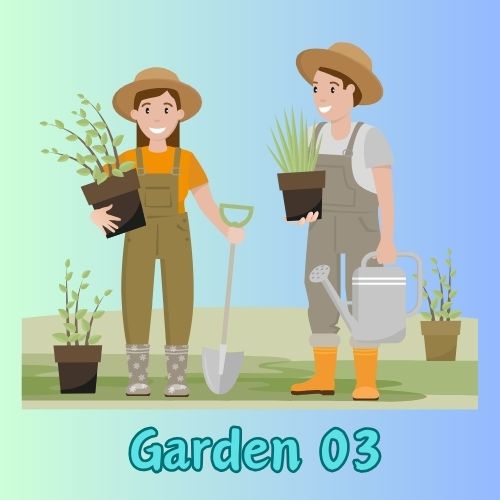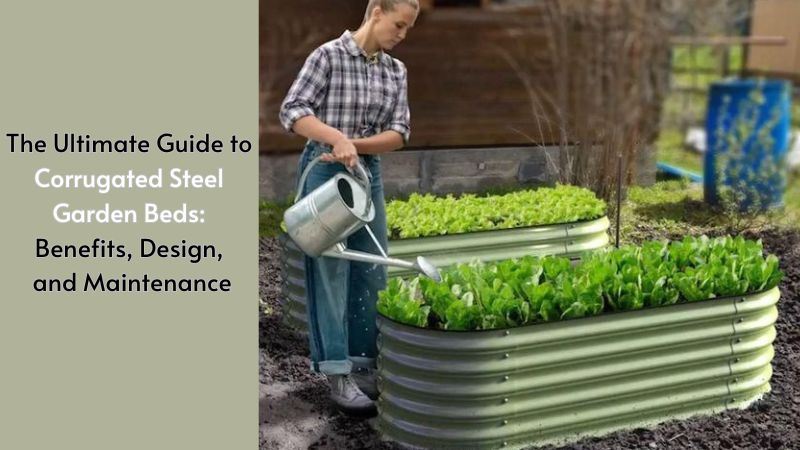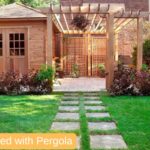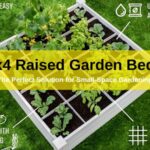Gardening enthusiasts are always on the lookout for innovative and practical solutions to enhance their gardening experience. One such solution that has gained popularity is the corrugated steel garden bed. Known for its durability, versatility, and aesthetic appeal, corrugated steel offers a modern twist on traditional garden beds. In this comprehensive guide, Garden 03 will delve into the benefits, design options, and maintenance tips for corrugated steel garden beds, helping you make an informed decision for your gardening needs.
1. Understanding Corrugated Steel Garden Beds
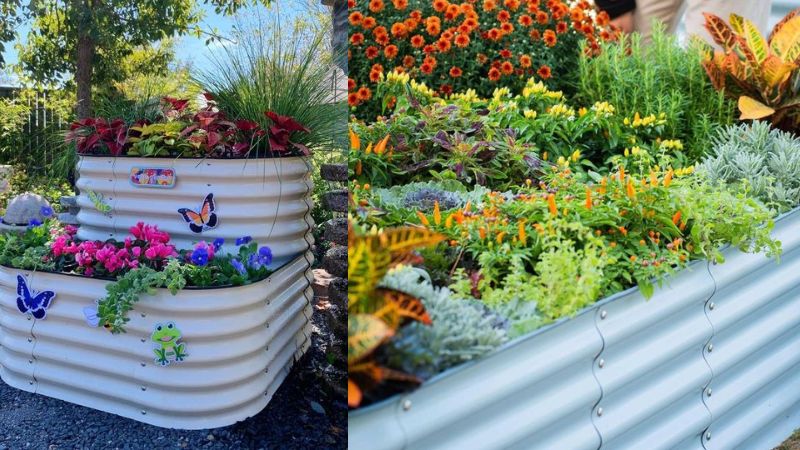
Corrugated steel garden beds are constructed from sheets of steel that are formed into corrugated patterns, providing added strength and rigidity. These garden beds are typically used for growing vegetables, herbs, and flowers and can be a stylish addition to any garden space.
1.1. Benefits of Corrugated Steel Garden Beds
- Durability: One of the primary advantages of corrugated steel garden beds is their durability. The corrugated design enhances the steel’s strength, making it resistant to bending and warping. Additionally, steel is highly resistant to pests, rot, and decay, ensuring a long lifespan for your garden bed.
- Low Maintenance: Corrugated steel requires minimal maintenance compared to wood or plastic garden beds. It does not need regular staining or sealing, and it is less susceptible to issues like termites or mold.
- Temperature Regulation: The metal construction of corrugated steel garden beds helps regulate soil temperature. It can absorb and retain heat during the day, which is beneficial for growing warm-season crops. Additionally, the steel can help extend the growing season by providing a warmer environment for plants in cooler climates.
- Aesthetic Appeal: Corrugated steel garden beds offer a modern and sleek look that can enhance the visual appeal of your garden. The industrial aesthetic complements various garden styles, from contemporary to rustic.
- Versatility: Corrugated steel garden beds are available in various shapes, sizes, and heights, making them adaptable to different garden layouts. Whether you have a small urban garden or a spacious backyard, you can find a corrugated steel garden bed that suits your needs.
2. Designing Your Corrugated Steel Garden Bed
Designing a corrugated steel garden bed involves considering factors such as size, shape, and placement. Here’s a step-by-step guide to help you create the perfect garden bed for your space.
2.1. Size and Shape
- Determine the Size: Start by measuring the available space in your garden. Corrugated steel garden beds come in various sizes, so choose one that fits your space and meets your gardening needs. Common sizes include 4×8 feet, 4×4 feet, and custom dimensions.
- Choose the Shape: While rectangular and square beds are the most common, you can also opt for circular or oval designs. Consider the layout of your garden and how the shape of the bed will complement the overall design.
- Decide on Height: Corrugated steel garden beds are available in different heights, typically ranging from 12 to 36 inches. Higher beds are ideal for gardeners who prefer less bending or have limited mobility. Lower beds are suitable for smaller spaces or when growing shallow-rooted plants.
2.2. Placement and Installation
- Select the Location: Choose a sunny spot for your garden bed, as most vegetables and flowers thrive in full sunlight. Ensure the location has good drainage to prevent waterlogging and root rot.
- Prepare the Site: Clear the area of grass, weeds, and debris. If needed, level the ground to create a stable base for your garden bed. You may also want to lay down landscaping fabric to suppress weeds and prevent soil erosion.
- Install the Bed: Follow the manufacturer’s instructions for assembling and installing your corrugated steel garden bed. Most beds come with pre-drilled holes and assembly hardware, making the installation process straightforward. Secure the bed in place using stakes or anchors if necessary.
3. Planting and Growing in Corrugated Steel Garden Beds
Once your corrugated steel garden bed is installed, it’s time to start planting. Here’s a guide to help you get the most out of your new garden bed.
3.1. Soil Preparation
- Choose the Right Soil: Use high-quality garden soil or a custom soil mix for raised beds. A good mix should be well-draining, rich in organic matter, and capable of retaining moisture. Consider a blend of compost, peat moss, and perlite for optimal results.
- Fill the Bed: Fill your corrugated steel garden bed with the prepared soil mix. Leave a few inches of space at the top to allow for mulch and prevent soil erosion.
3.2. Plant Selection and Layout
- Select Plants: Choose plants that are suitable for your climate and the growing conditions in your garden bed. Consider the amount of sunlight, temperature, and water requirements of each plant.
- Plan the Layout: Arrange your plants according to their spacing requirements and growth habits. Taller plants should be placed at the back of the bed or in the center if using a circular design, while shorter plants can be placed towards the front or edges.
3.3. Watering and Fertilizing
- Watering: Regularly water your garden bed to keep the soil consistently moist. Corrugated steel can heat up quickly, so monitor the soil moisture levels and adjust your watering schedule as needed. Drip irrigation or soaker hoses can be effective for maintaining consistent moisture.
- Fertilizing: Fertilize your plants according to their specific needs. Use a balanced fertilizer or organic options like compost and manure to provide essential nutrients. Avoid over-fertilizing, as this can lead to nutrient imbalances and potential plant damage.
4. Maintenance and Care
Maintaining your corrugated steel garden bed involves regular checks and care to ensure its longevity and optimal performance.
4.1. Cleaning and Inspection
- Clean the Bed: Periodically clean the steel surface to remove dirt, debris, and any algae or mold that may develop. Use a mild detergent and a soft brush to avoid scratching the surface. Rinse thoroughly with water.
- Inspect for Damage: Check the garden bed for any signs of rust or damage. While corrugated steel is resistant to rust, it’s still a good idea to inspect the bed regularly and address any issues promptly.
4.2. Winter Care
- Prepare for Winter: In colder climates, prepare your garden bed for winter by removing any dead plant material and applying a layer of mulch to protect the soil. Consider covering the bed with a tarp or protective cover to shield it from harsh weather.
- Winter Storage: If you need to disassemble the garden bed for winter storage, follow the manufacturer’s instructions for taking it apart and storing it in a dry, protected area.
5. Troubleshooting Common Issues
Even with the best care, you may encounter some issues with your corrugated steel garden bed. Here are solutions to common problems:
5.1. Rust
- Problem: Over time, rust may develop on the steel surface.
- Solution: Remove rust using a wire brush or sandpaper, then treat the affected area with a rust-inhibiting primer or paint designed for metal surfaces.
5.2. Soil Erosion
- Problem: Soil may wash out or erode, especially after heavy rainfall.
- Solution: Use mulch to help retain soil and prevent erosion. Additionally, consider adding a border or retaining wall around the bed to stabilize the soil.
5.3. Overheating
- Problem: The steel may heat up excessively, affecting plant health.
- Solution: Provide shade for the garden bed during the hottest part of the day, or consider using reflective materials to reduce heat absorption. Regular watering can also help mitigate the effects of heat.
6. Advantages Over Other Garden Bed Materials
Comparing corrugated steel garden beds to other materials can help highlight their unique advantages:
6.1. Wood Garden Beds
- Advantages of Corrugated Steel: Unlike wood, corrugated steel does not rot or decay, and it is less susceptible to pests like termites. It also requires less maintenance and has a longer lifespan.
6.2. Plastic Garden Beds
- Advantages of Corrugated Steel: Corrugated steel is more durable and can withstand extreme weather conditions better than plastic. It is also more aesthetically appealing and environmentally friendly, as it is made from recyclable materials.
6.3. Concrete Garden Beds
- Advantages of Corrugated Steel: Corrugated steel is easier to install and less labor-intensive than concrete. It is also lighter and more versatile, allowing for easier rearrangement and customization.
7. Conclusion
Corrugated steel garden beds offer a durable, low-maintenance, and aesthetically pleasing solution for gardeners seeking a modern and functional addition to their garden. By understanding the benefits, design options, and maintenance requirements, you can make an informed decision and enjoy a thriving garden for years to come. Whether you’re growing vegetables, herbs, or flowers, a corrugated steel garden bed can enhance your gardening experience and contribute to a beautiful and productive outdoor space.
Feel free to adjust and customize the content based on
